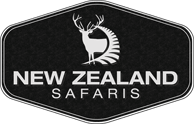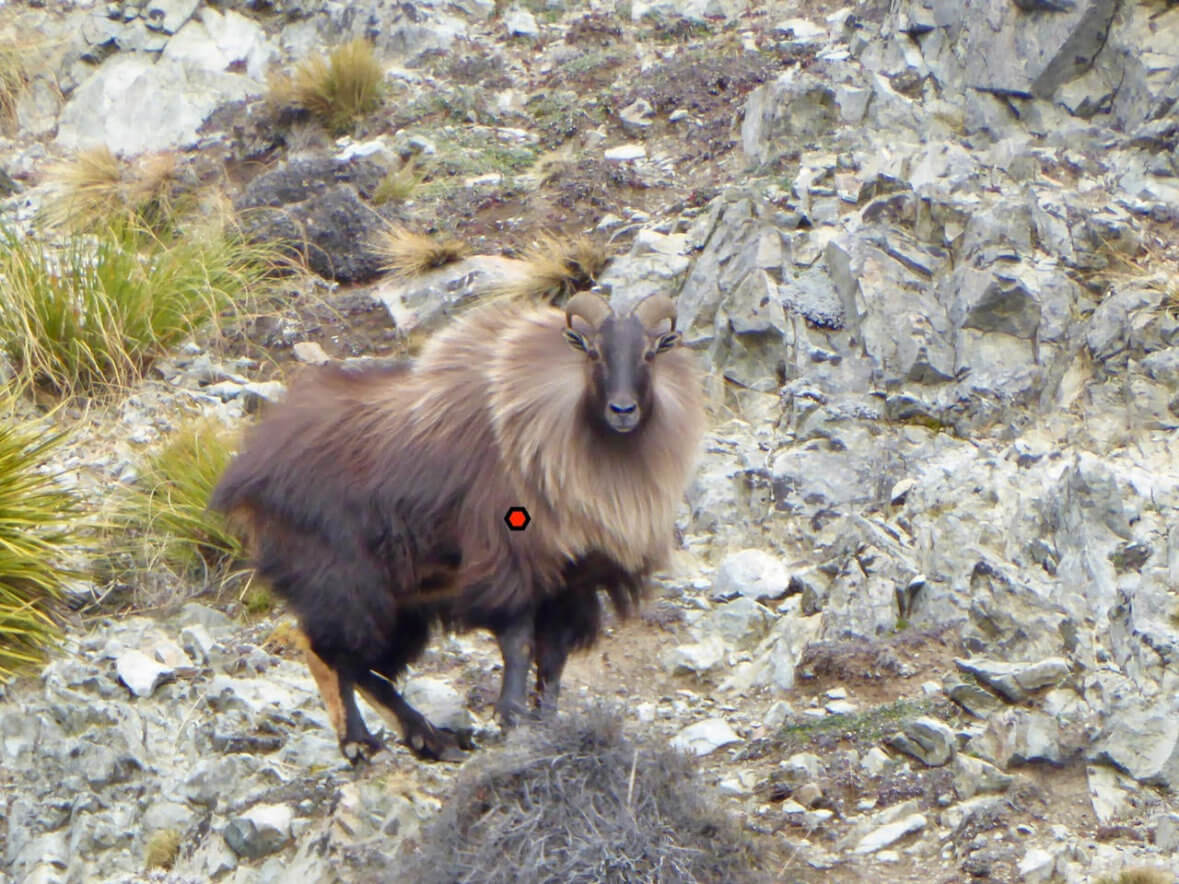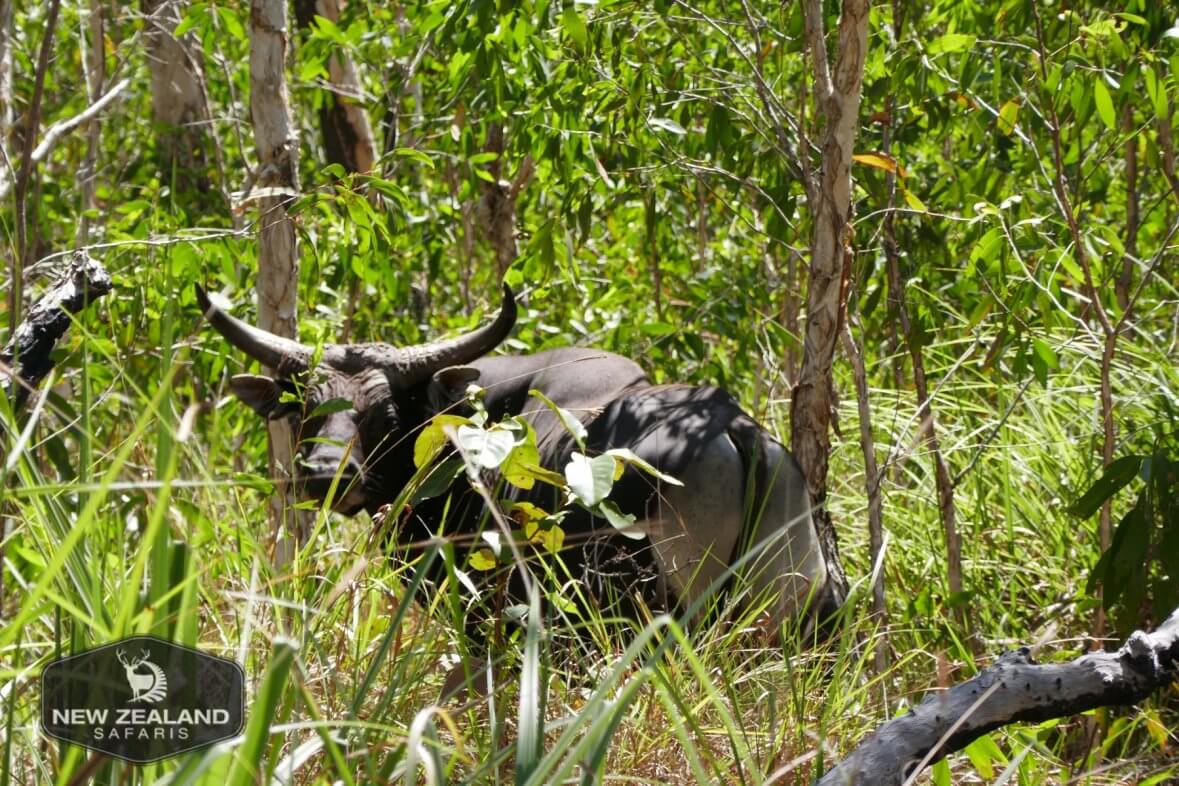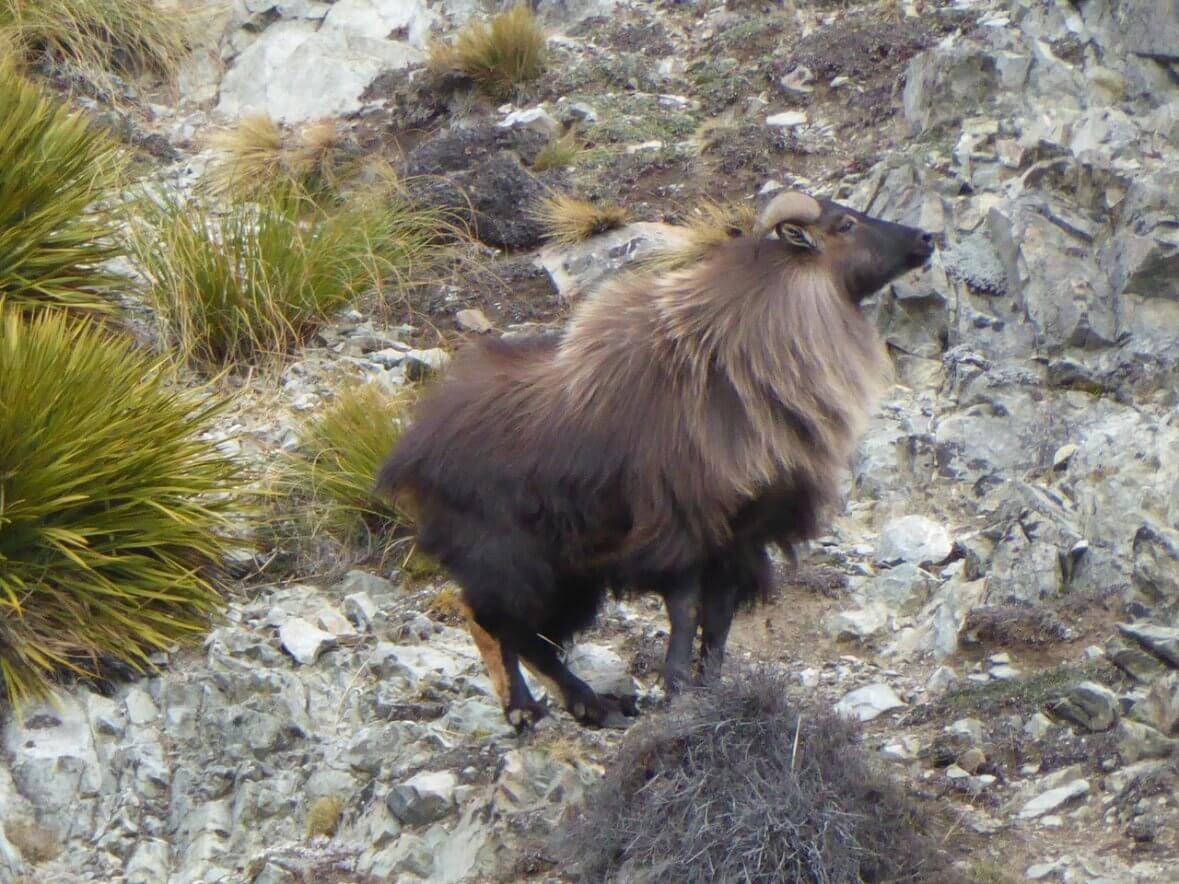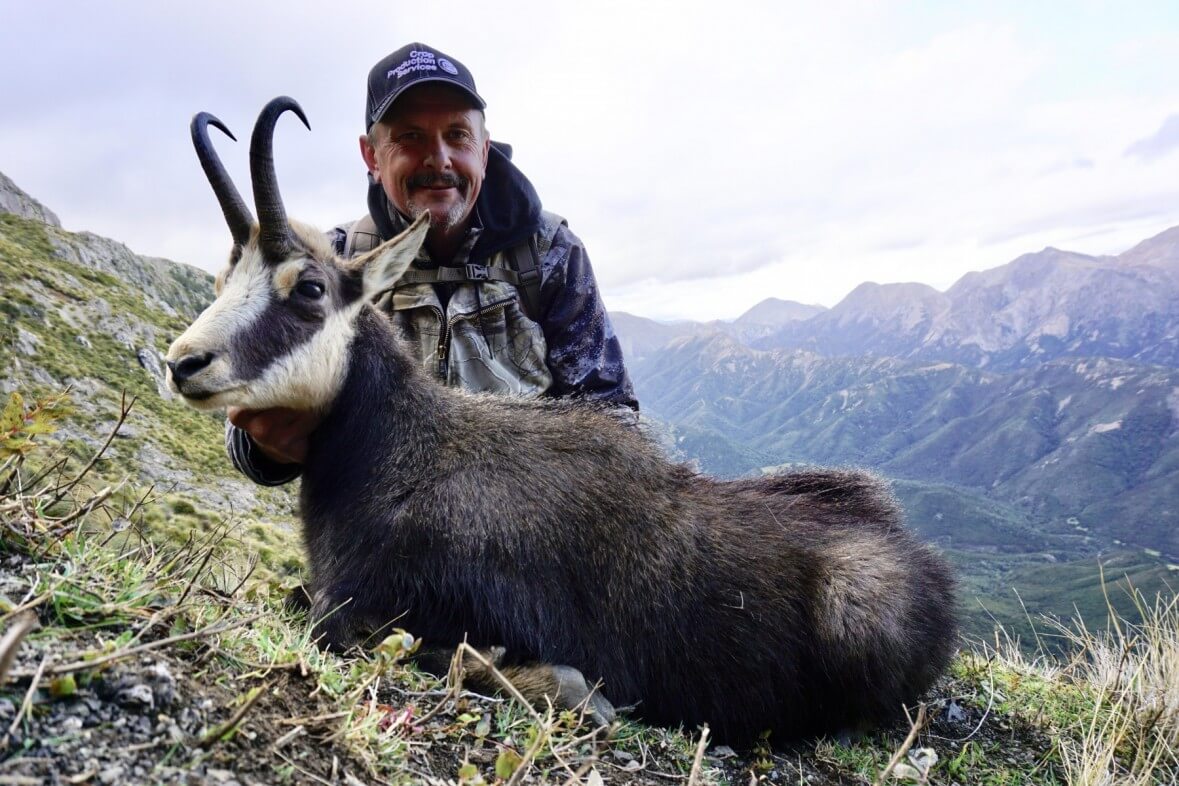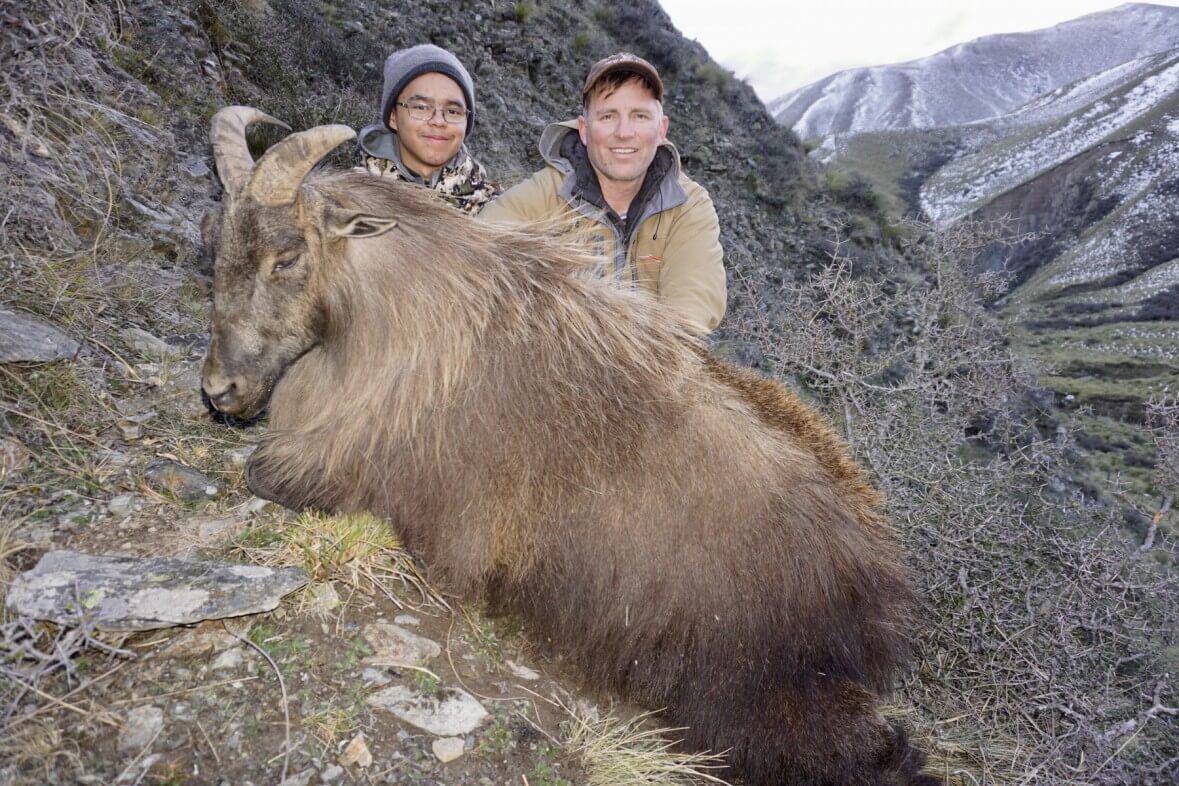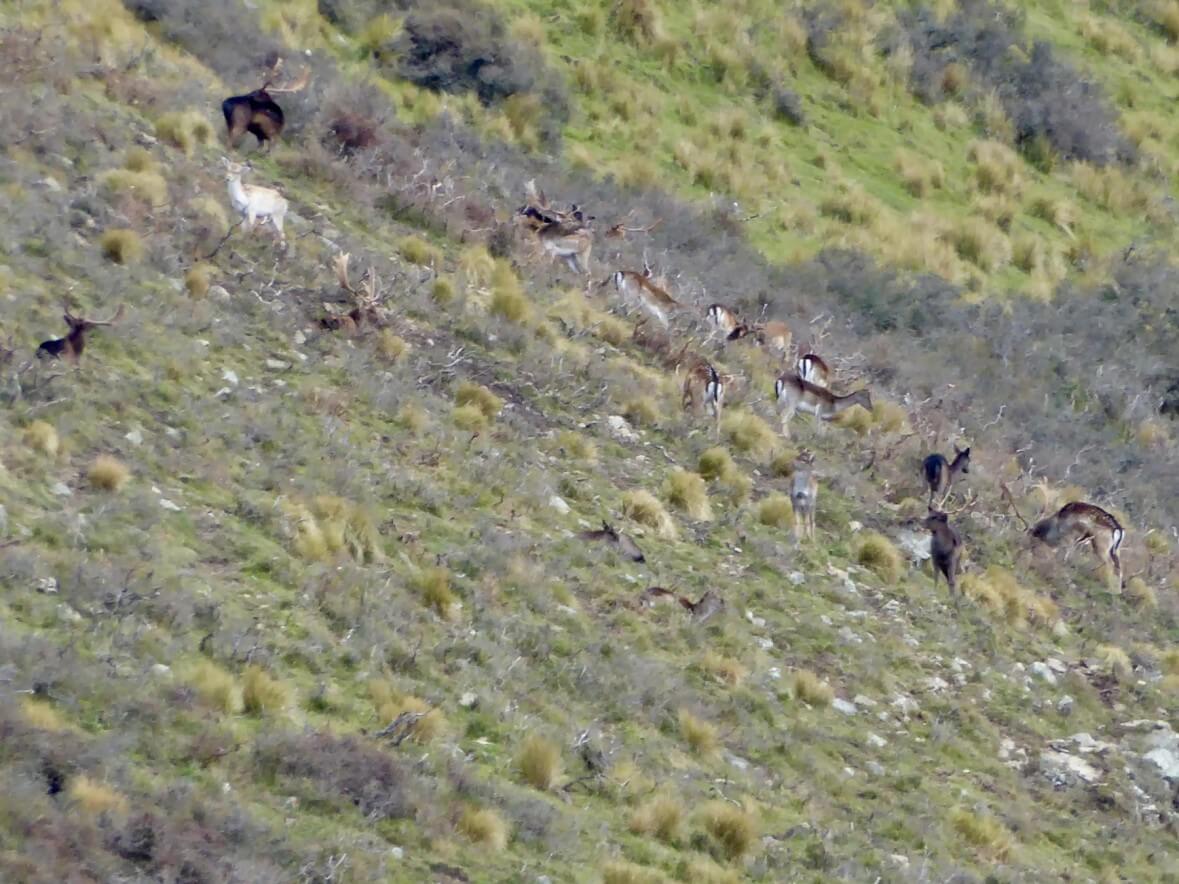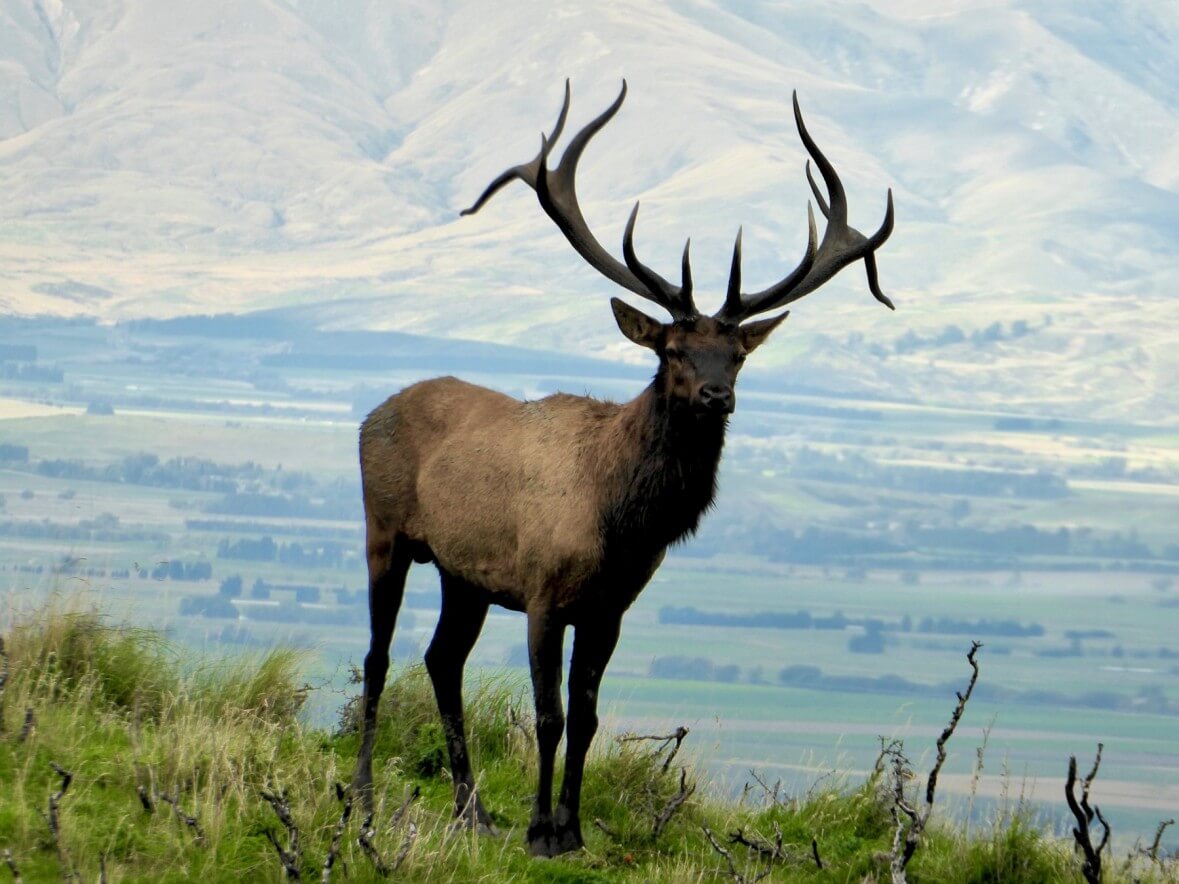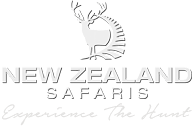Bull Tahr would have to be pound for pound one of the toughest big game mountain animals to bring down.
The bull tahr is difficult to bring down for two reasons, the long hair over their body and their bone structure.
Pre-rut some of the Bulls in their prime will weigh in excess of 300 pounds especially on private land where they are typically not hunted during the summer months. Due to the lack of hunting pressure tahr will come down to the lower country and graze in sheep and cattle country on fresh spring clover grasses. This is where you must use larger centre fire calibers such as the magnums or 30 caliber with bonded bullets to hunt these amazing animals ethically. The hair in winter is thick and matted, with extremely tough skin up to 1/2 inch thick making this combination very tough and shot placement becomes critical.
The shoulders of a tahr are well muscled and larger than their back end, you are shooting into the power house so take your time as you line up your shot placement as you will only get one vital shot, the rest will be just throwing lead. When Tahr hunting ideally you will have an experienced professional guide or spotter with you that has extensive knowledge of these animals. This will allow you the hunter time to concentrate on the proper set up of the rifle and the shot with the guide ranging distance, body angle, and ideal shot placement. You need to break both shoulders and puncture lungs, or at least one shoulder both lungs, yes they are just that tough. A shot back into the green lung (stomach), missing the vitals and or only hitting the shoulders will result in a wounded and lost Bull.
Take your time aiming small and steady, reload and get ready for a follow up shot this is not the animal to chase. On a mature Bull Tahr, 6 years or over older the hair in winter can hang 9-12 inches down over the leg, 6-9 inches over the bottom of the chest, and 3-9 inches on top of the shoulder.
Banteng Hunting in Australia on wild, free ranging herds is conducted up on the Coburg Peninsula, in the Northern Territories of Australia. First introduced in 1849 as a food source, today they are the only Banteng herd that is still completely pure in strain. (more…)
Bow hunting in New Zealand has grown in popularity with international clients coming over to hunt with New Zealand hunting outfitters and guides. While bow hunting is extremely popular within North America, it is still a relatively small number of hunters who will choose this method when traveling outside of their country on a hunting safari.
Some New Zealand hunting guides and outfitters will advertise bow hunting in New Zealand as their main method of safari hunting. Some hunts can be more bow hunting friendly than others, hunters really do need to find out all the information before booking an international hunt with the intent of using a bow and arrow.
Some considerations to think about before bow hunting in New Zealand or any international hunt:
- Have your done your home work on the game you are interested in hunting and success rate with a bow on that animal? Some Outfitters will only hunt certain ways and areas which can directly effect your success rates. It’s important to know exactly what you are in for, once you have paid a deposit it is too late to find out the truth.
- Are you confident shoting out to 60 yards? Many shots, especially on mountain animals in more open country will be between 40-60 yards.
- Will you be sitting in a blind or spot and stalk? This will predict shooting distances, and your potential shooting position (i.e standing, sitting, kneeling). Be sure you really practice these distances and positions before your hunt.
- Professional hunting outfitters will have a wounding policy, you will really want to know this before you start hunting.
- Are you prepared to go the whole hunt and not get a shot on your animal? Do you pay regardless of whether you are successful or not? Many of our hunters will spend 2-4 days hunting with a bow and if unsuccessful will pick up a rifle. The purist will be prepared to stick it out the whole hunt without even drawing their string.
- How many days can you spend on one animal? This can affect your hunt if you are going for multiple animals.
- Are you prepared to be happy with possibly a lesser quality trophy and be successful? This is often never talked about, especially on free range wild animals as typically you will have one opportunity on a hunt to make it happen. A lot of the time the trophy animal you are after will not get into a comfortable bow range.
- Know what bow size and arrow heads to use. Some animals are a lot tougher than others.
- Time of year? Many think that during the rut for most game animals is the best time to hunt with a bow. We’ve found with bow hunting pre and post rut can be more successful when animal movement is a lot more predictable with less eyes.
- Overall quality of the hunt, what is it you’re really looking for? There’s a lot of hunting outfitters out there, from budget options to high quality professional guides and operations. Use a lot of references to make up your own mind and don’t be swayed by the sales pitch.
- Ask specifically for references who bow hunted with the outfitter you are evaluating and call them. Ask about their experiences and success rates.
- If it sounds too good to be true, it generally is.
Himalayan Tahr, also known as ‘the king of the mountain’ in New Zealand Bull Tahr are only found in the South Island of New Zealand. The trophy Bull Tahr population heavily concentrated along the central part of the Island both West and East coasts. Judging a trophy Bull Tahr can be tricky in the warmer months, finding them alone can be a real challenge. You really need to look in heavy native cover, the older Bulls will seldom come out at all if it is hot, maybe making it to the fringes at dark and gone by first light. High quality optics are essential, using both binoculars and spotting scope, you pay for what you get in glass so there really is no substitute.
Most clients are so excited about the big game New Zealand has to offer, they completely overlook turkey hunting opportunities.
May is the beginning of the chamois rut, and our chamois first foot hunter of the year has arrived from Idaho, USA.
In April 2018 we saw one of the heaviest early snows in the high country we have seen. For Alaskan Outfitter Jeff Burwell and family this could not have been better timing for tahr hunting with New Zealand Safaris.
Fallow bucks are in full rut (croak) now in April. Deer hunting for fallow bucks is different than any other deer species in the world. The fallow bucks will have their own rut pad or a communal one and the females or does will come into these pads to get mated.
As April begins in the South Island of New Zealand you can typically find 3 species of big game animals in or near peak rut, including red stag, fallow buck, and elk.
